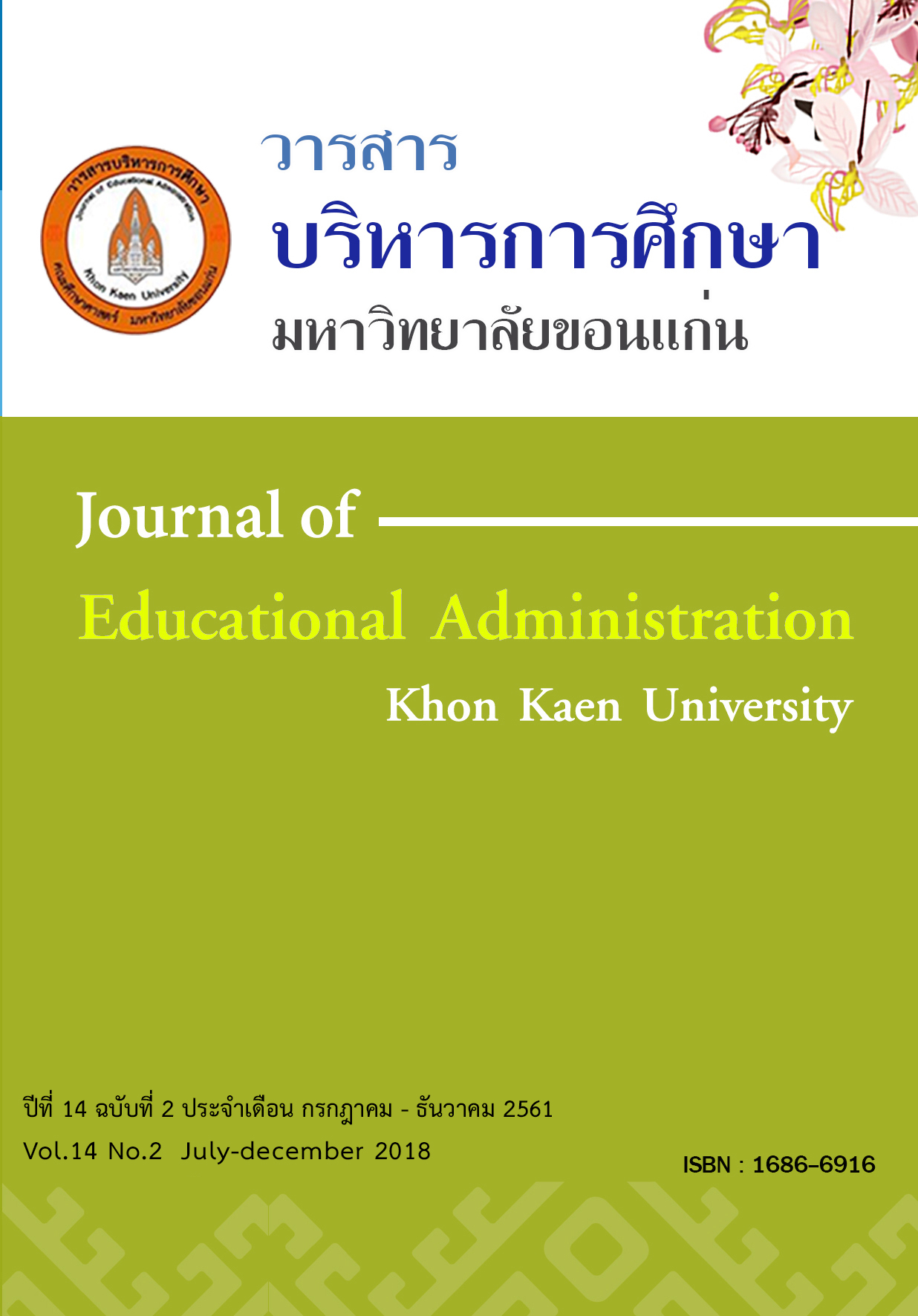A STRUCTURAL EQUATION MODELLING OF SCHOOL LEADERSHIP AND ORGANIZATION BEHAVIORS : THE MEDIATING EFFECTS OF HIGH PERFORMANCE ORGANIZATION
Main Article Content
Abstract
The aims of this research were to develop and evaluate the consistency of the equation model of school’s administrator leadership and organization behavior factors of High Performance Organization (HPO). The equation was developed by empirical data and size of direct and indirect factors. Total effects of administrator leadership and organization behaviors were used to develop the equation as well. All data were operated via intermediate parameters. The samples of qualitative data collection consisted of 5 academic experts to evaluate the components of content. The quantitative data for consistency of model evaluation were collected from 1,075 schools under Secondary Educational Service Area Office in whole country. Data were collected from 1 administrator and 1 teacher in each school and total samples were 2,150 people. Data analysis unit was school and multi-stage random sampling was applied in this research.
The result showed that the structural equation model of school’s administrator leadership and organization behavior factors of High Performance Organization (HPO) was consistence with empirical data, chi-square and p-value > 0.05 (2 = 48.53, df = 35, p-value = 0.064).The ratio of 2 /df was not higher than 2 (2 /df = 1.386) and goodness of fit index (GFI) was 0.90 – 1.00 (CFI = 1.000 and TLI = 0.990). Values of RMSEA and SRMR were 0.041 and 0.007, respectively. The highest influence factor of HPO was distributed leadership (=.548). The other influence factors were learning organization ( =.509), transformational leadership ( = .396), workplace culture ( = .189), human resource management ( = .135) and strategic leadership ( =- .170), respectively. Regarding of indirect influence, it was found that HPO was most Influenced by distributed leadership ( = .623). The other effects were human resource management (= .492), transformational leadership (= .257) and strategic leadership (= .036), respectively. In additional, the maximal total influence parameters of HPO was distributed leadership ( =1 .171). The next ones were transformational leadership ( = .653), human resource management ( = .627), learning organization ( = .509), workplace culture ( = .189) and strategic leadership ( =- .133), respectively.
The analysis of intermediate parameters (Mediating Effects), the most effected to HPO was human resource management ( = .627) which was affected directly by distributed leadership ( =.721). The second effect was learning organization ( =.509). Moreover, human resource management influenced directly ( = .135) to HPO and influenced indirectly ( = .492) via learning parameter to HPO. In consequence, total intermediate parameter was the most effect on HPO. Learning intermediate parameter was the second effect which was influenced directly by human resource management factor ( = .967). While the transformational leadership ( = .110) was most influenced indirectly by distributed leadership ( = .697) and transformational leadership ( = .235), respectively. In additional, HPO was affected by total influence of transformational leadership ( = .345 ) and most direct affected by learning organization ( = .509). The workplace culture was the smallest intermediate parameter on HPO. It was concluded HPO was most influenced by distributed leadership (= .912), transformational leadership ( = .257) and strategic leadership, respectively ( = .195). Furthermore, the working culture of organization was direct and total influences to HPO ( = .189).

